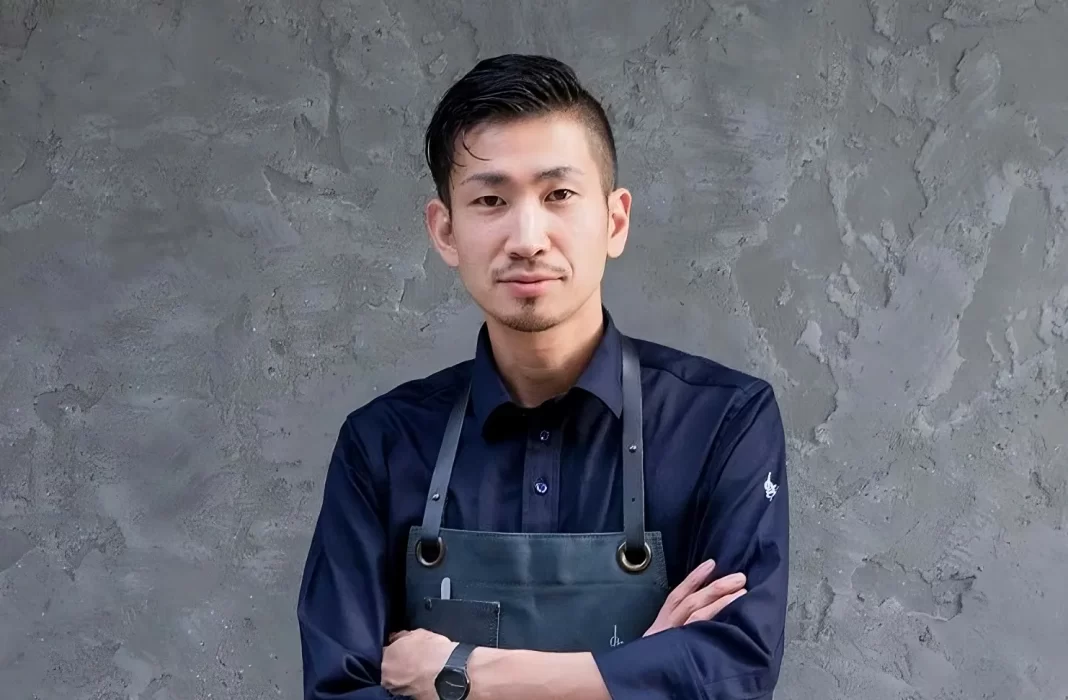Meet a man who dreams of putting Taiwan on the world’s culinary map, yet admits that “not many people understand me, and it’s actually quite tiring to live on this earth.”
He possesses what psychologists call the “architect” personality (a rare INTJ type found in just 0.1% of the population), which perhaps explains why this soft-spoken Japanese chef sees patterns and possibilities where others see only ingredients.
In fact, Tahara feels more of a philosopher than a chef inside Logy: the gleaming new space he’s built in Taipei’s Neihu District. But don’t let his quiet demeanor mislead you. He is on a mission that reaches far beyond the kitchen.
The Accidental Ambassador
When Tahara landed in Taiwan seven years ago, he came simply to cook. Fresh off a three-year tenure as sous chef at Tokyo’s two-Michelin-starred Florilège, he was tasked with opening its Taiwanese sibling, Logy. The original goal was modest: “I wanted to convey the food culture that a foreigner felt in Taiwan.”
What followed surprised even him. Taiwan embraced him with a warmth that moved him to tears. In the years since, the support and generosity he encountered transformed his cooking and his entire worldview.
Now, he wants to formalize that emotion and give it a voice on the world stage, as he explains in his conversation with Tatler Asia.
When Perfection Meets Passion

Walk into the new Logy, a space born from a year of obsessive planning with Japanese design powerhouse Keiji Ashizawa Design, and you immediately understand why Tahara’s vision required such dramatic expansion.
The original 13-seat restaurant, tucked away in a shadowy Daan district alley, could barely contain his ambitions.
The new space hits you the moment you walk in. Take round tables, for example. They’re specially selected Karimoku pieces because “the idea of sharing food around a round table is not common outside of China, and even in Japan it is rare.” He wanted to preserve something essentially Asian that much of the world has forgotten.
Then there are the crystal glasses. Even for a simple highball, Tahara insists on Baccarat crystal. When asked why, he simply shrugs. “I don’t do anything that doesn’t mean anything.”
This kind of statement makes you realize you’re dealing with someone who operates on an entirely different frequency.
The Art of Creative Destruction
Perhaps the most telling moment in understanding Tahara comes when discussing his old signature dishes. The chawanmushi that put Logy on the map? Gone. Completely eliminated from the new menu.
“I’m a person who is constantly looking for change and growth, and I don’t want to look back at the photos of the dishes in my second and third years of opening the restaurant,” he says with the kind of brutal honesty that would make most restaurateurs wince. “I think the real evolution is that I don’t even want to see last year’s work.”
It’s this philosophy that earned Logy two Michelin stars, a spot on Asia’s 50 Best Restaurants, and recognition as Taiwan’s “Best Restaurant of the Year.” Tahara isn’t interested in resting on laurels—he’s gunning for three Michelin stars, and his ambitions are clearly visible in his carefully designed menu.
Poetry on a Plate

What emerges from Logy’s kitchen reads like love letters to Asia. Consider his “lemon winter melon” dessert, which contains no lemon juice at all. Instead, he layers lemongrass, green cardamom, and lemon balm to evoke a citrus profile that looks like a cold drink but surprises with its warmth and complexity. It’s culinary poetry, a quiet provocation that rewrites your expectations of flavor.
Or take his “tea rice” instead of the traditional bread course. Hokkaido Seven Star Rice infused with Taiwanese alpine tea. In one bite, it narrates his entire journey, rooted in Japan and reborn through Taiwan.
There’s tofu crafted from yellow beans with cheese-like texture and tomato water, and kueh pie tee reimagined with eggplant purée and straw-roasted fish. Every dish is a dialogue between cultures, spoken fluently in the language of flavor.
The Tea Evangelist
Ask what excites Tahara most, and it’s not accolades or technique. It’s tea. Specifically, Taiwanese tea.
His usual reserve gives way to something closer to awe when he speaks about it. “Taiwanese tea is diverse and of enough quality to compete in the international market, but the locals do not seem to be fully aware of this value,” he says, with characteristic precision.
This isn’t marketing. It’s a lived conviction. Tahara has spent years studying the nuances between Taiwanese, Chinese, and Japanese teas. “Compared with Chinese and Japanese tea, Taiwanese tea has a unique fragrance and personality,” he insists. Many fine dining establishments abroad are already incorporating it into wine pairings.
He wants Taiwan to claim that space with pride.
The Bigger Picture

But Tahara’s vision doesn’t stop at tea or even food. “The higher the restaurant’s reputation, the greater the power of speech,” he notes.
This is what drives his broader mission. He believes Taiwan’s “acceptance of foreign culture is extremely high,” but urges more chefs to participate in global exchanges, host international collaborations, and proactively promote Taiwanese cuisine. “Only by taking the first step,” he says, “can the world truly understand Taiwan.”
It’s a quietly radical proposition from someone who could easily retreat into his own success. But Tahara isn’t wired that way. “Public welfare can be done at any time,” he says. “But if we can make Logy have a greater impact, unite more people, and even attract enterprises to participate, then the impact will be even more profound.”
“Some people may think Logy is just a small restaurant. But I’ve never thought only about the restaurant. I’ve thought about what it could mean for society. For a country.”
The Dreamer’s Paradox
There’s something deeply moving about watching a reserved chef devote himself so completely to honoring a culture that isn’t even his own. His ultimate goal is simple but profound: “He hopes that the Logy will not only become the most popular restaurant for travelers to visit when they come to Taiwan, but will even become one of the reasons to choose Taiwan.”
It’s an audacious dream for a quiet man from Hokkaido, but seeing the passion with which Tahara works, you can’t help but believe he might just pull it off.
After all, this is someone who has turned cultural exchange into an art form. And in a world that often feels divided, perhaps we need more quiet revolutionaries like Tahara—people who believe that understanding between cultures can be built one meal at a time.





